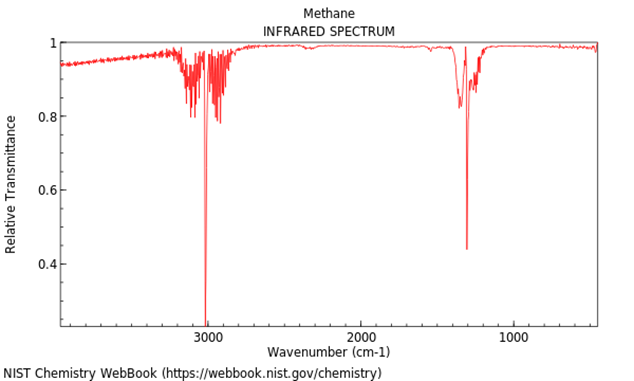Continuous Emissions Monitoring Systems (CEMS) play a vital role in the reduction of greenhouse gas emissions. While Optical Gas Imaging (OGI) technology is widely used as an effective tool for leak detection and repair (LDAR) operations, in its handheld versions. Advancements in technology create an opportunity for continuous fixed installations as a new solution.
Fixed solutions, like MetCam®, offer continuous 24/7 monitoring and are not subject to missed leaks between inspections like handheld monitors.
Optical Gas Imaging (OGI) detection relies on the unique absorption signature of a target gas vapor in the infrared spectrum.

Unlike a grid of fixed point gas detectors, fixed OGI solutions are capable of identifying and alerting gas leaks within the field of view (FOV) and does not have to wait for the gas to pass over a sensor to catch potential hazards rapidly.
Environmental factors like wind can push the gas away from the point sensor and it would never initiate an alert, but with fixed OGI installations, it can visually pick up the gas cloud and alert the operator providing visual representation of where the gas cloud is traveling. This information can help operators make split second decisions.
For this reason, having a wide FOV is advantageous.
MetCam is a fixed uncooled OGI system operating in the Long Wave Infrared (LWIR) spectrum. Designed bottom up for the Oil and Natural Gas market.
MetCam’s core technology is based on real-time, dual-band imaging.
A patented optical arrangement along with integrated environmental sensors and proprietary algorithms, enable reliable gas path-concentration calculation.
Additionally, MetCam is designed with Class 1 Div. 1 hazardous location certification requirements, continuous health monitoring and industrial standard outputs (4-20mA, HART, ONVIF). With these certification qualifications, MetCam was designed with a large field of view (FOV) to reduce the need for extra moving parts of a pan-tilt and eliminate revisit times, providing a true scalable continuous monitoring system.